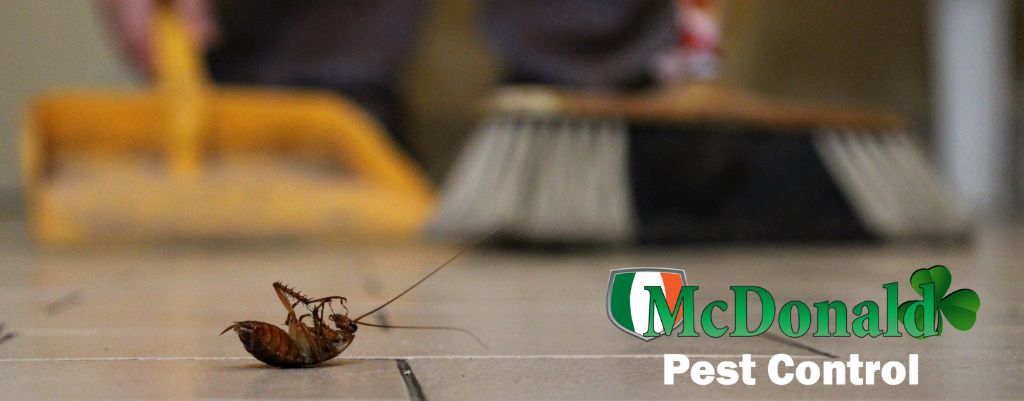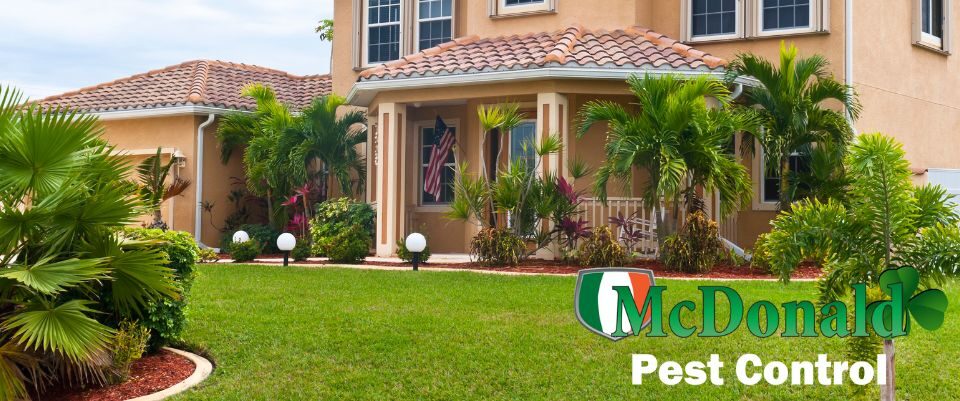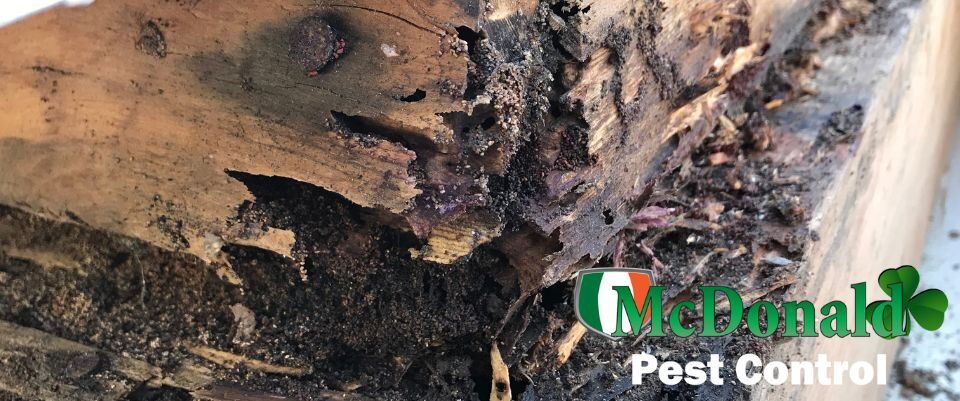
How Lawn Maintenance Stops Pests in Your Backyard
July 21, 2025
Termite Damage: Save Thousands on Home Repairs Fast
August 30, 2025Common Entry Points Cockroaches Use to Invade
Cockroach pest control begins with knowing where cockroaches slip into your home or business. The most common entry points are cracks in walls, gaps around doors and windows, plumbing lines, and vents. Sealing off these access points and maintaining cleanliness are vital first steps to keep roaches from causing a cockroach infestation.
- Roaches easily sneak through tiny cracks and crevices.
- Doors, windows, and poor seals invite cockroach entry.
- Plumbing and utility lines are major cockroach highways.
- Vents and drains offer hidden entry routes.
- Fixing leaks and gaps helps with cockroach control.
- Professional cockroach pest control blocks repeat invasions.
Why Cockroaches Invade Homes and Businesses
Cockroaches are drawn to warmth, moisture, and food. They thrive in Florida and other humid regions, making properties in these areas especially vulnerable. Once roaches find an entry point, they can quickly spread through kitchens, bathrooms, and storage areas.
What Drives Cockroach Infestation?
Roaches are nocturnal scavengers, most active at night. They’re attracted not just by unsealed food but by hidden water sources and clutter. Even clean properties are at risk if structural gaps exist.
The Biggest Entry Points for Roaches
Knowing where cockroaches get in is key to effective roach pest control. Here’s where they most often invade:
- Cracks and Gaps in Walls
Cockroaches can squeeze through openings as small as 1/16 inch. Check exterior walls, especially near foundations or siding joints, for cracks. Indoors, roaches exploit baseboard gaps, wall voids, and even spaces behind cabinets.
Tips for Cracks and Gaps:
- Add draft stoppers to exterior doors.
- Repair window screens and replace worn sealant.
- Doors and Windows
Doors that don’t close tightly or have worn weather stripping are prime targets. Windows with gaps, broken seals, or damaged screens also boost the risk. - Plumbing and Utility Lines
Pipes and cables often pass through walls and floors, leaving unsealed holes. Cockroaches are experts at following these lines from sewers or basements into kitchens and bathrooms.
Tips for Doors, Windows, and Plumbing:
- Seal gaps around pipes with caulk or expanding foam.
- Check behind washing machines, sinks, and toilets for small holes.
- Vents and Drains
Kitchen and bathroom vents, dryer exhausts, and floor drains can all become cockroach highways. Especially in older buildings, missing covers or damaged grates let pests inside.
Tips for Vents and Drains:
- Install vent covers and regularly clean all vents and drains.
- Shared Walls and Rooflines
In multi-unit buildings or duplexes, roaches easily travel between spaces using shared walls, attics, or false ceilings. Even a well-sealed room may be breached by a neighboring infestation.
How Professional Cockroach Pest Control Targets Entry Points
Experts don’t just treat the symptoms; they track and block how pests get inside. Here’s how professional cockroach control handles entry points:
Inspection
A thorough inspection reveals tiny cracks, utility gaps, and overlooked openings. Technicians use flashlights, mirrors, and experience to spot signs of roach activity, like droppings or shed skins.
Targeted Sealing (Exclusion)
Professionals apply caulk, foam, or mesh to block cockroach entry. They focus on dark, moist areas behind appliances and under sinks.
Strategic Treatments
After sealing, pesticides or safe bait gels are used in high-risk areas. Professionals know where to apply for maximum impact and minimal disruption.
Ongoing Monitoring
Even after initial treatment, monitoring is essential. Trap placement and scheduled checks ensure no new access points open up.
Can Regular Cleaning Alone Stop Cockroaches?
Cleaning is crucial but not always enough. Roaches can survive on scraps, grease, and even wallpaper glue. Even pristine kitchens are at risk if gaps go unsealed. To fully prevent a cockroach infestation, combine cleanliness with sealing up entry points and, if needed, professional cockroach pest control.
Experience Matters: Why DIY Isn’t Always Enough
As pest control professionals, we’ve seen that over-the-counter sprays and DIY fixes may only kill a few visible roaches. Many infestations remain hidden in wall voids or behind appliances, where store-bought treatments can’t reach. Only a comprehensive approach – identifying entry points, blocking them, and treating affected zones – can break the roach cycle.
Key Signs Cockroaches Are Getting In
Even if you don’t see live roaches, these clues mean cockroaches may be entering your home or business:
- Faint musty odor in kitchens or bathrooms.
- Droppings or dark specks along baseboards.
- Shed skins or dead roaches in hidden spots.
- Active at night or running when lights turn on.
Spotting these early signs means it’s time to take action, before the problem spreads.
Preventing Entry: Pro Tips for Homeowners and Property Owners
- Inspect seals and weather stripping on all exterior doors.
- Repair and maintain window screens.
- Use silicone or expanding foam to fill wall and floor gaps.
- Cover drains and regularly clear debris from vents.
- Store food in airtight containers and clean up spills promptly.
- Check plumbing for leaks and seal pipe holes.
Regular inspections help catch new entry points early, especially after storms or repairs.
Frequently Asked Questions (FAQs)
Q: What are the most common entry points for cockroaches in Florida homes?
A: Common cockroach entry points include cracks in foundations, gaps around doors and windows, unsealed plumbing or utility holes, and open vents or drains. Warm, humid climates like Florida make sealing these entry points even more critical for cockroach pest control.
Q: Can cockroaches come up through my drains or pipes?
A: Yes, cockroaches can enter homes and businesses through sinks, floor drains, and plumbing lines, especially if water traps dry out. Regularly running water and using drain covers can help minimize this risk.
Q: How small of a gap can a cockroach fit through?
A: Some species of cockroaches can squeeze through cracks as small as 1/16 of an inch, about the thickness of a credit card. Sealing tiny wall or floor gaps is essential for cockroach control.
Q: Is professional cockroach pest control more effective than DIY methods?
A: Yes, professional pest control combines targeted treatment, entry point sealing, and ongoing monitoring. DIY efforts can miss hidden colonies or fail to block recurring entry routes, leading to persistent infestations.
Q: How can I tell if cockroaches are coming from a neighboring property?
A: In shared buildings, you may notice activity along shared walls, near vents, or in attics. A professional inspection can help trace the source and recommend property-wide solutions for roach pest control.
Call McDonald Pest Control for Cockroach Pest Control in Pinellas County
Protecting your property from roaches starts with identifying and sealing their entry points. For effective, long-lasting cockroach pest control in Pinellas County, rely on McDonald Pest Control.




